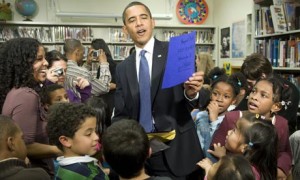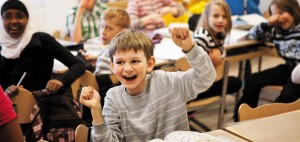A new book has attracted much interest in the Washington DC, especially on Capitol Hill, Finnish Lessons: What Can the World Learn From Educational Change in Finland?. The book arrives after Finland scored first in science and second in reading and math on the standardized test administered by the Program for International Student Assessment.
Conducted among industrialized nations every three years, American students finished 25th in math, 17th in science and 12th in reading on the latest PISA assessment. Obviously, in our global economy, this nation’s international educational attainment is discouraging for our future prospects.
What stands out to me is that Finnish students take only one mandatory standardized test, at age 16. Finland has the same number of teachers as New York City, but only 600,000 students compared to 1.1m in the Big Apple. Finnish teachers’ starting salaries are lower than in the US, but high-school teachers with 15 years’ experience make 102% of what other college graduates make. In the US, the figure is 62%.
Some of Finland’s students’ outcomes should be especially interesting to US policy makers. Fully 93% of Finns graduate from high school – 17.5 points higher than American students. And 66% of Finns are accepted to college, a higher rate than the US and every European nation. Strikingly, the achievement gap between the weakest and strongest students academically is the smallest in the world.
What might really interest some politicians is that Finland spends about 30% less per student to achieve these far-superior educational outcomes. For those who argue that a much smaller, less diverse country like Finland can’t easily be compared to the US, there is an inconvenient fact: Finland performs much better educationally when compared to similar Scandinavian nations with similar demographics. Plainly, something is right in the “Land of a thousand lakes”.
Fortunately, US education policy is evolving in the face of our relative global underperformance. Federal policy continues to move away from the rigid certainties of the Bush-era No Child Left Behind legislation. The NCLB law set a hopelessly unrealistic target for 100% student proficiency in every school by 2014. It’s clear that won’t be achieved.
Currently, 32 states and the District of Columbia have successfully applied for waivers from NCLB. To secure this flexibility, states had to have the US Department of Education approve credible plans to raise standards, strengthen accountability and undertake reforms to improve teacher effectiveness. Localizing education reform in this way should more effectively combine ambition and realism.
Additionally, President Obama’s Race to the Top program provides federal incentives for states to reform their public education offerings. These education reforms include lifting caps on the number of public charter schools, innovative policies to turn around failing schools, and improving teacher and principal effectiveness.
Continued…
Read more: http://www.guardian.co.uk/commentisfree/2013/feb/15/us-education-reform-lessons-from-finland




